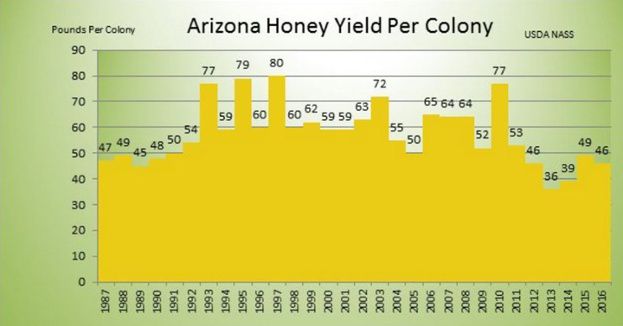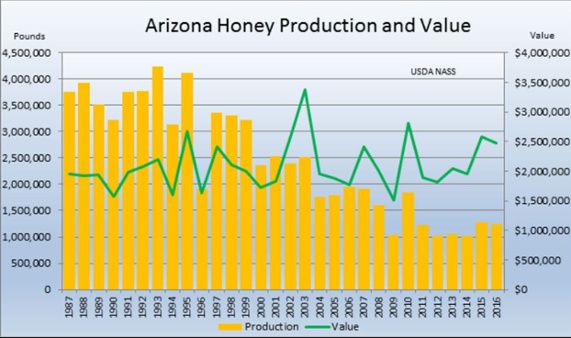Arizona Agriculture’s Honey Story is Sweet
Published
3/28/2017
By Julie Murphree, Arizona Farm Bureau Communication & Organization Director: According to the United States Department of Agriculture’s (USDA) National Agricultural Statistics Service (NASS), the average yield of honey from each Arizona bee colony was 46 pounds in 2016, down three pounds from the previous year. But, if you look at the chart, you’ll see dramatic ups and downs especially since 2010.

Despite the current cloud of colony collapse disorder, several factors contribute to the ebbs and flow of honey production including fewer foraging options for nectar, wet winter weather conditions, unhealthy hives and shifts in growth or contraction of businesses in the hive business.
According to the USDA, in 1970 Arizona produced steady amounts of citrus across 80,000 acres, but as of 2012, the states grows just over 17,000 acres of citrus, a favorite foraging options for nectar. With less citrus to pollinate, few options exist.
In the USDA’s monthly National Honey report, demand for honey remains good across Arizona. Temperatures were at above normal levels during the first three weeks of February, and at slightly below normal levels the last week of the month in Arizona. The range of temperatures for the month

Quick Facts about U.S. Honey Production (Top Four Sourced from USDA)
— In the United States, in 2016, honey production from producers with five or more colonies totaled 162 million pounds, up 3% from 2015.
— There were 2.78 million colonies producing honey in 2016, up 4% from 2015.
— Yield per colony averaged 58.3 pounds, down 1% from 2015
— Honey prices were at $2.075 per pound in 2016, down from $2.083 in 2015.
— Honey bees are essential to the production of more than